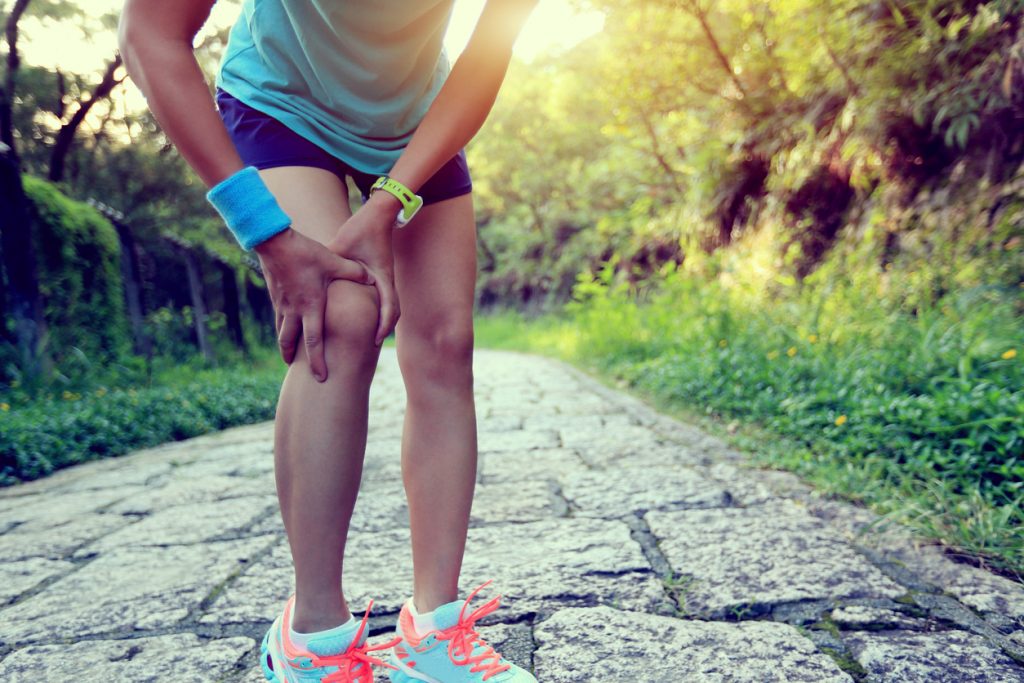Yesterday afternoon I sent a 2,600+ word email to my newsletter readers detailing my past running history and a full analysis of last year. I talked about what worked, what didn’t, and what goals I have for this year.
[If you missed it because you’re not a subscriber, just sign up here so you don’t miss our best advice. I’ll send you an illustrated guide to our ITB Rehab Routine to get started.]
Now I want to talk about the most defining moment of my running career: the New York Marathon in 2008.
It wasn’t because I ran 2:44:38, which I thought was pretty fast. It was because the marathon reduced me from a somewhat fast, competitive runner to a cripple. After New York I couldn’t run again for six months because of an IT band (ITB) injury, also commonly known as IT band syndrome or ITBS.
I’ve told my story before: I devoted those six months to getting healthy, seeing physical therapists, doing a ton of research on strength exercises and training strategies, and seeing expensive massage therapists. When I started running again my training was different – and I haven’t had a major injury since.
Now I want to talk about what exactly I screwed up, how I turned my running around for the better, and key takeaways to help you.
Diagnosing an IT Band Injury
My IT band injury didn’t happen during the marathon itself. But the race beat me up pretty bad – I had trouble walking for close to a week. In hindsight, I didn’t take enough recovery time and went for my first run only 9 days after the race.
I was able to do about four 20-30 minute runs every other day until a sharp pain started on the outside of my left knee – classic IT band pain. Most ITB injuries hurt at the knee insertion and I showed the traditional injury symptoms. At the same time, my left glute and hip were extremely tight.
What Causes an IT Band Injury?
Why did it happen in the first place? My training leading up to the marathon wasn’t perfect. Looking back, there were a lot of things that I did poorly to prepare for my first marathon that led to my IT band injury.
- I didn’t do any hill workouts and even avoided them during most distance runs.
- The only core workout I did was my standard core routine (and I skipped it a LOT).
- I didn’t do any flexibility exercises before or after my runs.
- My overall volume wasn’t consistent and too low for marathon prep: 65-75 miles per week.
- I did zero hill sprints.
- I didn’t lift at the gym.
You’ll notice a pattern there: almost everything I skipped was strength-related. Not enough core exercises, no hill sprints, no weights, not enough miles, and no hills.
My initial treatment for my IT band injury was simple (and ineffective): take more time off. I rested for a few days and then went for a run, only to be struck down by the same crippling pain within a few minutes.
I kept testing my IT band every few days for 6 weeks, with the same result every time. Isn’t the definition of insanity trying the same thing and expecting different results? I spent hundreds of dollars and saw numerous massage therapists, who couldn’t rub the pain away.
My fiancée convinced me to do a one-month boot camp in January. Despite a lot of strength exercises, my knee still hurt if I tried to run. I was starting to give up. In February I sat around on my couch, watching episodes of House and eating ice cream.
How to Treat an IT Band Injury
March rolled around and I got more proactive. I made an appointment with a physical therapist. He sucked and had no idea what was wrong with me. I tried a different PT. And another one. It wasn’t until my fourth physical therapist that I finally found someone who knew about running injuries and knew how to treat me.
What worked for me was a combination of targeted massage and specific strength work. Since my injury was severe there was significant scar tissue along my IT band and a lot of tightness in my hip and glute. I needed massage to target these areas, break up the scar tissue, and increase my hip mobility. My trusty foam roller helped a lot.
The ITB Rehab Routine
The specific strength exercises I did while in physical therapy formed the basis for the ITB Rehab Routine I developed. It included exercises that targeted my hips, glutes, quads, and hamstrings.
We also have an illustrated guide to the routine here.
Here’s the routine for your use:
-
Side Leg Raises
Lie on your right side with a resistance band around your ankles. Lift your left leg to about 45 degrees in a controlled manner, then lower. I do 30 reps per side.
-
Clam Shells
Lie on your right side with your knees together and a resistance band around your lower thighs. Your thighs should be about 45 degrees from your body and your knees bent at 90 degrees. Open your legs like a clam shell but don’t move your pelvis – the motion should not rock your torso or pelvic girdle. Keep it slow and controlled. I do 30 reps on each leg.
-
Hip Thrusts
Lie on your back with your weight on your upper back your feet. Your legs will be bent at the knee. Lift one leg so your weight is all on one leg and your back. Lower your butt almost to the ground and thrust upward by activating your glutes. This exercise is great for glute strength and hip stability. I do 25 reps on each leg.
-
Side Hip Bridge
Lie on your ride side with your feet propped on an elevated surface about 1-2 feet high. Push your bottom foot down and lift your torso using your hip muscles while keeping a stable spine. Return to the starting position. I do 30 reps on each leg.
-
Side Shuffle
With a resistance band around your ankles and knees slightly bent, take ten steps laterally. The band should be tight enough so it provides constant resistance during all steps. Still facing the same direction, take another 10 steps back to your starting point. That is one set. I like to do 5 sets. This exercise will look like a slow-motion version of a basketball “defense” drill.
-
Pistol Squats
These are simply one-legged squats. The key to a successful pistol squat is to not lean forward, keep the motion slow and controlled, and make sure your knee does not collapse inward. I do 15 reps on each leg.
-
Hip Hikes
Stand on your right foot. With your pelvis in a neutral position, drop the left side of your pelvis so it is several inches below the right side of your pelvic bone. Activate your right hip muscle and lift your left side back to its neutral position. I do 20-25 reps per side.
-
Donkey Kicks
In a table position with your hands under your shoulders and knees under your hips, kick your foot back like you’re trying to push the ceiling higher. Swing your leg back underneath your body without letting your knee touch the ground and repeat. I do 20-30 reps per leg.
-
Iron Cross
Lie on your back with your arms out to your sides and swing your right leg across your torso and up to your left hand. Make sure to keep your shoulders flat against the ground, but you can rotate your torso and hips as you swing your leg toward your hand. Repeat the same movement for the left leg for 20 reps on each side.
-
Scorpion
Lie in a prone position with your arms out to your sides and swing your right leg across your back up to your left hand. Keep your shoulders and chest as flat against the ground as possible. Like Iron Cross, there will be a good amount of rotation in your torso and hips as you swing your leg toward your hand. Repeat the same movement for the left leg, doing 20 reps on each side.
You can view the entire routine here:
For an illustrated guide to this routine, sign up here (it’s free).
My Journey with IT Band Recovery
After going to physical therapy twice a week and doing this routine almost every day for a month, I was ready to start running again. My first run after my six month forced-sabbatical was 20 minutes and I felt like death. Not running for half a year will wreak havoc on your fitness level.
While going to physical therapy, I was also researching the most successful training programs of elite runners. What did the best coaches prescribe? How did faster runners train so hard? Why couldn’t I?
For the next six months, I diligently did my core and strength exercises and gradually ran a little more. I started executing my new training strategies and slowly got in better shape. It was a long road, but by October I was running over 50 miles per week and feeling good.
So what specific changes did I make to my training to prevent my IT band injury from coming back?
Injury Free Training

My new training program addressed the weaknesses of my previous program and built on what I was doing right. Here’s what I added to my running:
- hill sprints
- roller coaster runs with gradual climbs and descends
- lower body strength training (specifically squats, lunges, and dead lifts)
- consistent mobility work
- patience to cut a run or slow down
I also became a lot more consistent with my core workouts and my sprint sessions. Before the marathon, I did core 1-2 times every week and strides about once every week. That’s just not enough. Now I do hill sprints, strides, and surges. I do some type of core or strength routine every day. And I’m a helluva lot stronger.
Now, if I go more than a week without hills, hill sprints, or a gym workout I feel weak and uncoordinated. It’s a recipe for an injury.
Trail Running and Other Ways to Help Prevent Injuries
If you follow my training, you’ll notice that I often talk about trail running. I use to do most of my running in Rock Creek Park in Washington, DC. The terrain is hilly, uneven, and in some parts even dangerous (I’m telling you – one of these days I’ll have to write about falling into Rock Creek).
Now I’m in Colorado and continue to run trails. I see this as a huge benefit: the varied terrain makes me use slightly different muscles to run, increases my agility, and helps build even more strength.
Implementing variety in my own program is something I’ve talked about before but it’s worth repeating. Aside from trail running, I rotate at least two pairs of shoes (often 3) with them usually being somewhere on the minimalist spectrum. Right now I’m running in the ASICS Sky Speeds and the Saucony Kinvara’s. Rotating different shoes stress your feet and legs in slightly different ways, which will help prevent overuse injuries.
For more injury prevention tips, sign up for this free e-course on how to stay healthy.
Making This Year Healthy and Injury-Free
These strategies will absolutely work to help you become a better runner. If you were paying me for this information, I’d offer a money-back guarantee.
As you sign up for races, plan your training, and set goals for this year, I hope you don’t make the same mistakes I did. Learn from where I failed and run some of these workouts to help you get stronger and faster.
Recommended resource for those with ITBS or who suffer from chronic injuries: